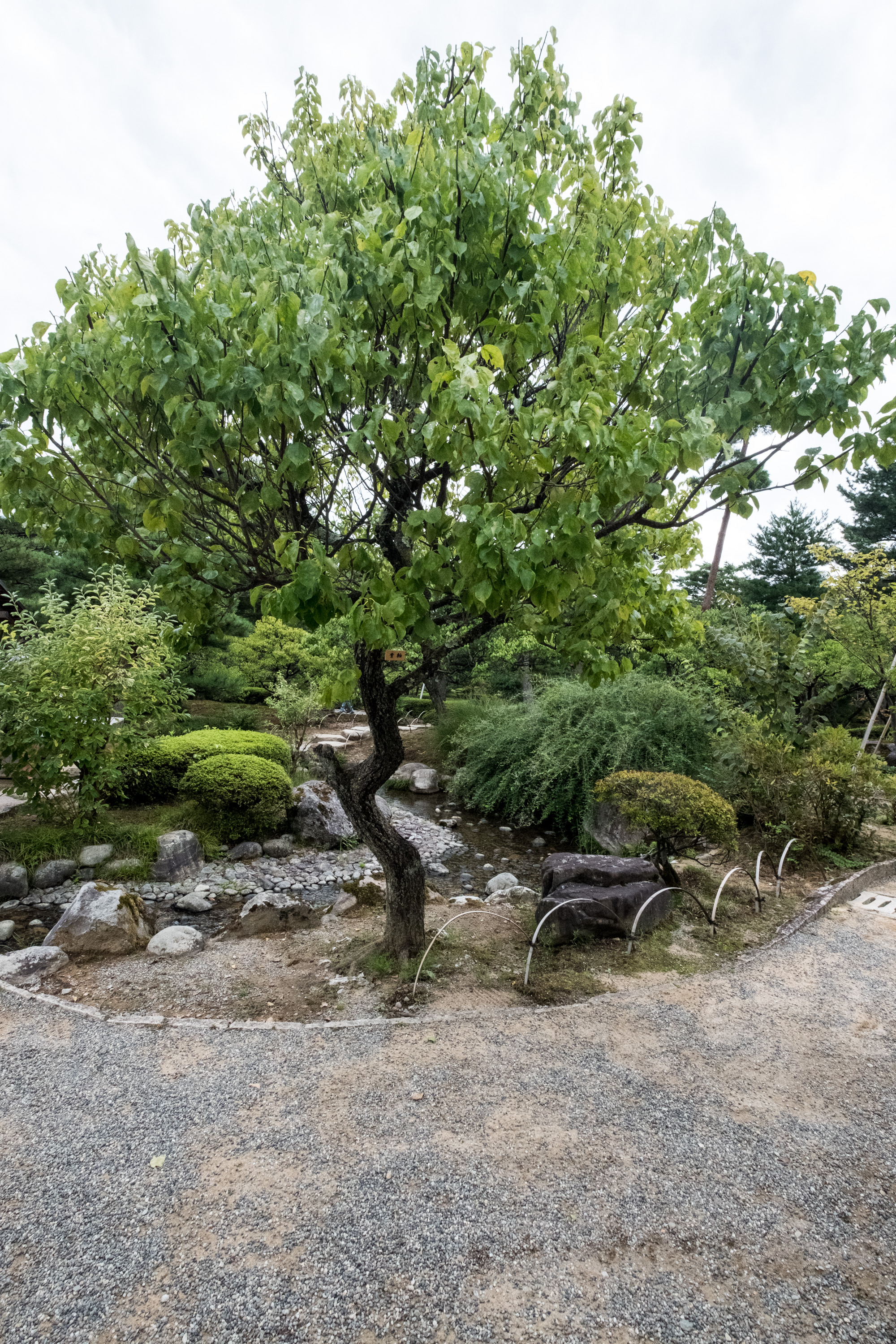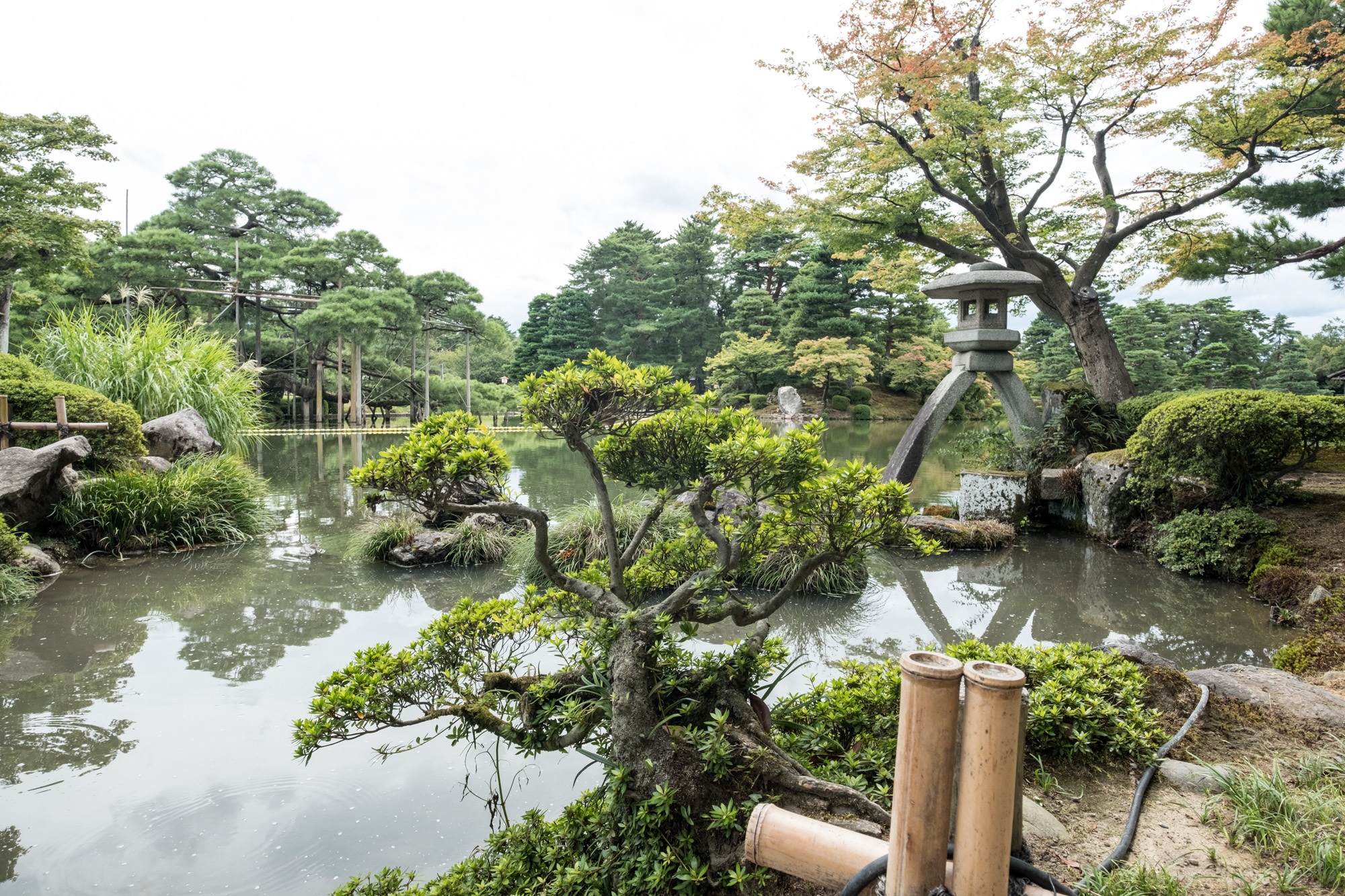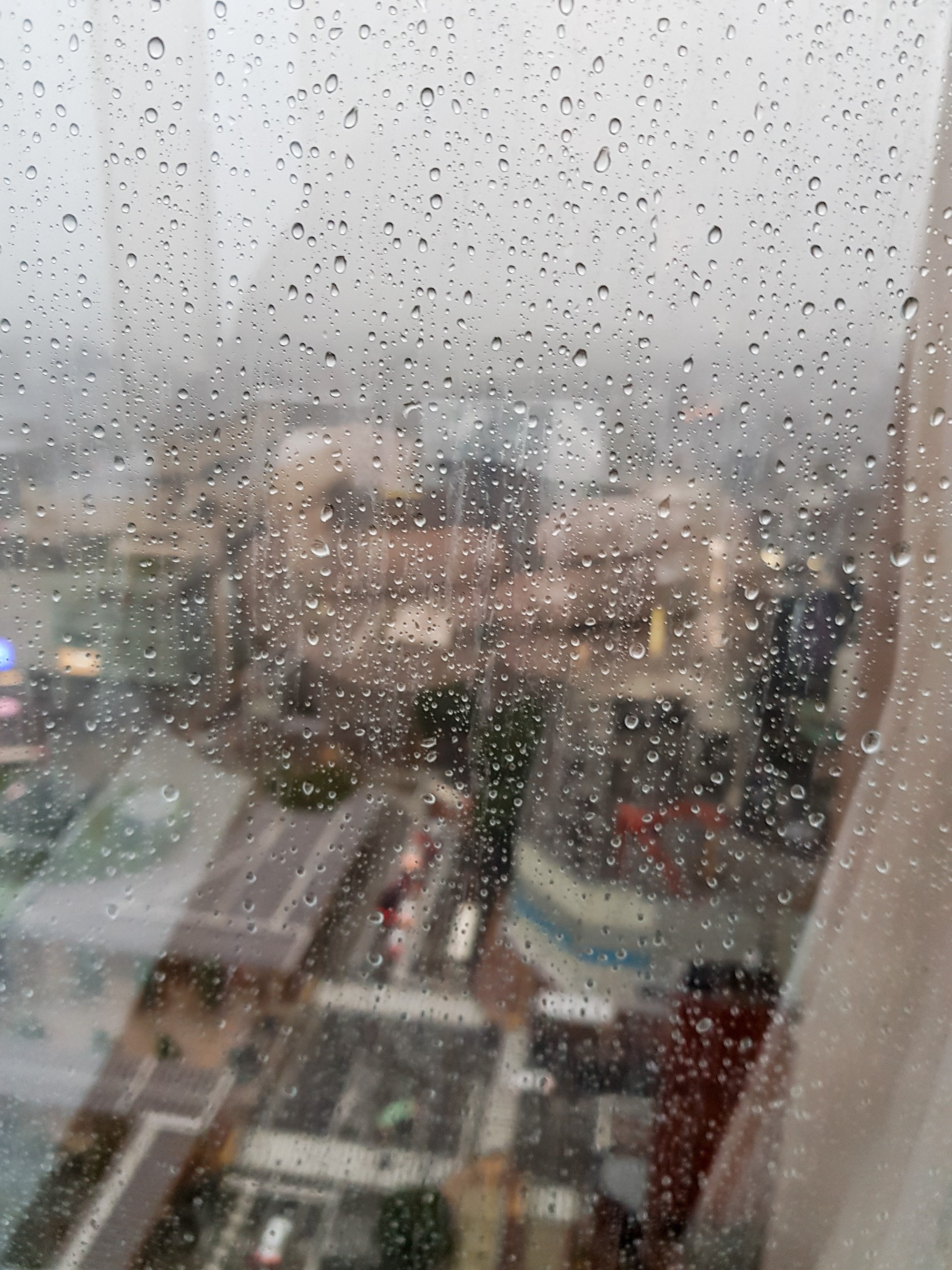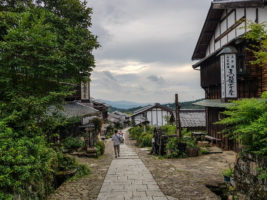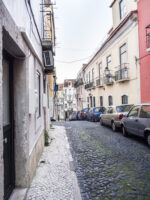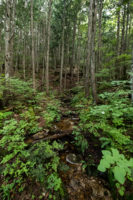Conflicting directions from our 2 navigation devices made it a little challenging to find our hotel in Kanazawa. We are mildly shocked and pleased to find the hotel Niko has a very plush lobby – very upmarket – a step up in the right direction – I quickly check the booking to see if I missed a 0 off the price! Fortunately all is in order and we check into our room is on the 24th floor with a fabulous view across to the ocean. A big bed, chairs, and even a desk are a big step up from futons on the floor- sheer luxury – home! Conveniently, the Nissan car rental is directly across the room as well as the 7-11 convenience shop so we stock up on milk, tea, breakfast foods and wine after dropping off the car. Trip advisor recommends a nearby Italian bistro so we indulge in a really excellent & possibly the most expensive wood fired pizza ever with and wine with a tomato salad (even more expensive than the pizza).
Next morning after breakfast in room, we set off to the train station plotting a route for our suitcases without carrying them up stairs for the next stage of our journey on a Shinkansen to Hiroshima. Turns out the station is in chaos with big queues of people because a lot of trains had been cancelled due to the oncoming typhoon ‘Jebi’ expected later that night. Reservations in hand we then explore where to buy a bus day pass and set off to see the Kouroku-en garden. It is very old and beautifully landscaped in the traditional Japanese style and full of tourists like ourselves! The ponds are very tranquil and usually have a feature such as a lantern or bridge to please the eye, part of the Japanese aesthetic – all the trees are clipped and well behaved -(but a tourist or 10 does not a good photo take – unless your object is to document people taking ‘selfies’.)
The museum for traditional crafts turns out to be in one corner of the garden and we venture in delighted to find a ceramic music box exhibition along with some amazing turned wood bowls with the most extraordinarily beautiful finish and find tranquillity as no-one else is there.
Returning to the garden we become aware that the wind is becoming quite gusty and some of the shops are packing up and securing their wares.
Thoughts of visiting the adjacent Castle gardens are soon abandoned when we see that they too are going to close early so alternatively we walk down to the Contemporary Art museum hoping they might not be closing. – Alas wrong again they are also closing early and we decided to just have lunch, which turns out to be quite delicious and in a very modern open setting.
Suddenly the rain starts in earnest – umbrellas are blown inside out – we decide to go back on the bus to our hotel but in order to feel that we have some value from our tickets westay on the bus for a round loop so we can see where everything is. The streets are becoming very empty and everything is closed when we arrive at the station except for the 7-11 shop where everyone is stocking up on food and drinks.
Choosing the underground tunnels we navigate back to the hotel but now the seriousness of the situation becomes apparent. The concierge confirms that there are only 3 restaurants in the hotel remain open and everything else seems to be closing. It is becoming increasingly wilder outside – strong winds and rain.
Back in our room we can see over the ocean with huge waves breaking over the harbour. Below trees are bending wildly in the wind – being blown in all directions. As the typhoon progresses our room becomes very unpleasant with the swaying and I start feeling a little strange so we quickly packed up our important things, computers, ipads, phones and passport and credit card, in case of evacuation and head downstairs.
The hotel lobby was very well patronised with other concerned travellers but we managed to find a nice comfy sofa and settle in until dinnertime. Turns out the buffet restaurant is really good– some of the best food I have had at a buffet and I manage to sample quite a few of the delicacies and offerings. In no particular hurry to leave, we sit at the restaurant until the storm had abated, and return to our room, thankful it had stopped swaying or possibly I have had sufficient wine to no longer tell the difference.
Next morning an early start to make up for lost time yesterday – there is not too much damage apart from trees and fences, unlike Kyoto & Osaka, which had taken the brunt of the storm.
The Gold leaf museum is our first stop and the displays show the history of how gold leaf was originally made by hand and preserved tools from the past. There is a small gallery of various forms of art that used gold leaf but disappointingly there was nowhere to buy any gold leaf – only souvenirs and cards.
The next stop is the Ninja temple called Myōryū-ji only to find you need to book a tour. After much discussion with the gift shop lady we conclude that there is a phone at the end of the street so we manage to book a tour at the end of the day – very strange system. We resume of tour of the Museum of Contemporary Art where there is an exhibition celebrating Japanese art in the 80’s.
Excerpt –“As a repercussion of the conceptual and stoic art of the 1970s, and in response to trends in Europe and the United States, Japan in the ’80s bore witness to movements that urged the reinstatement of the painting and sculpture media. What came to prevail as a result was “New Painting” characterized by vibrantly colourful and dynamic brushstrokes that reflected the flourishing economic circumstances of the times. In the ‘90s, art thrived on the energy of ’80s subcultures such as “otaku,” but as a consequence, ’80s art faded from art historical discourse. In recent years both in Japan and abroad, rapid progress has been made in research on Postwar Japanese art up until the 1970s including “Gutai” and “Mono-ha.” Hence, we now find ourselves compelled to examine Japanese art of the intervening decade— the ’80s. Looking back, over 30 years later, we will see that art forms and concepts fundamental to today’s art blossomed in the ’80s, such as the art installation, viewer participation in the artwork, valuing relationship with society, the concept of alternative space, media art, perspectives of relativizing the institution of “art,” and the sensitivity to find significance in mundanity and lightness. This exhibition reconsiders Japanese art of the 1980s through contemporary perspectives and introduces works that represent “Starting Points.”
The exhibition is engaging and interest but the star of the museum is the visually stunning ‘Leandro Erlich’s “Swimming Pool“.
The nearby Castle gardens are well preserved with a storehouse, surrounding moat and an Edo garden complete with lake bridge and manicured trees. The storehouse is open inside – it is all timber some that is so big you wonder how it was moved there. There are displays and cross sections of joinery so you can observe the construction and the amazingly cleaver carpentry techniques – interlocking timbers with no nails. Also the roof is covered in lead – very skilful.
On leaving the garden we came across a lot police on the bridge and the road cordoned off and news crews are in attendance so concluded that someone has fallen from the bridge. We will never know if they were taking a selfie and had an unfortunate fall.
Next onto the Ninja temple but first a little stop at a very small coffee shop in fact only 4 seats – we have an iced coffee and sweet potato chips – no idea how he could make a living from such a small enterprise.
In the Myoryuji temple only Japanese is spoken on the tour but give you are given an English written guide to follow (sort of like sub titles) as they take you room from room to explore the hidden stairways, traps, backdoors, false ceilings, hatches and other hidden items,
Behind any unimposing facade is quite a different reality, with more than twenty-three rooms, many stairs and three floors, this maze was for a large number of samurai to hide easily and protect the lord during his prayers or during military preparations.
Indeed, there are traps everywhere: a door leading to different places according to the way you open it, mysterious ascending and descending stairs, a deadly bridge could collapse with the touch of a finger…and still dozens more secrets worthy of an adventure film. This house of traps is said to have secret tunnels leading to Kanazawa Castle. It is certainly an interesting tour to take.
A tour to the markets is ill timed, we are too late and everything is closed so we return to the hotel and eat close by.
Next morning we are on the Thunderbird express to Shin Osaka and then on to Hiroshima.
